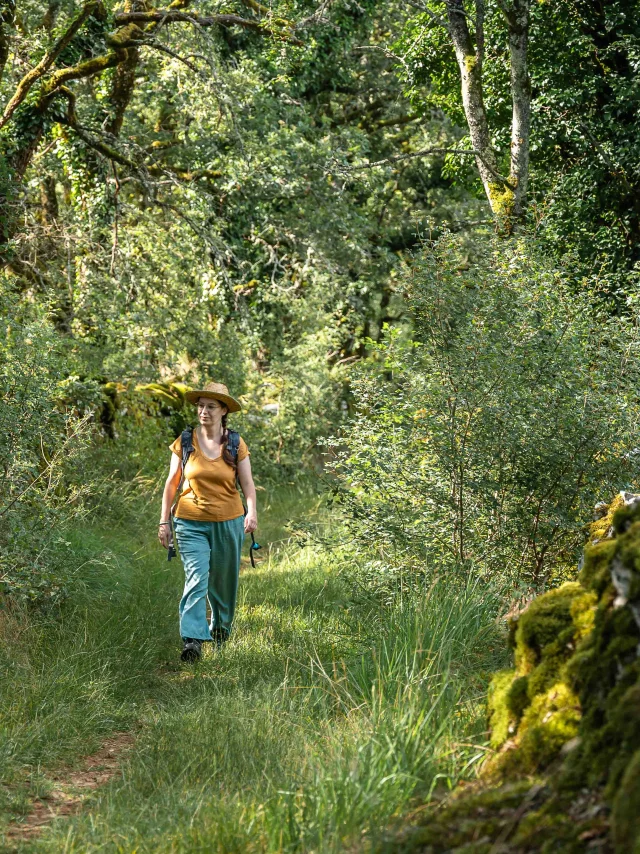 Family outing to Marcilhac-sur-Célé
Family outing to Marcilhac-sur-Célé Family outing to Marcilhac-sur-Célé
Family outing to Marcilhac-sur-Célé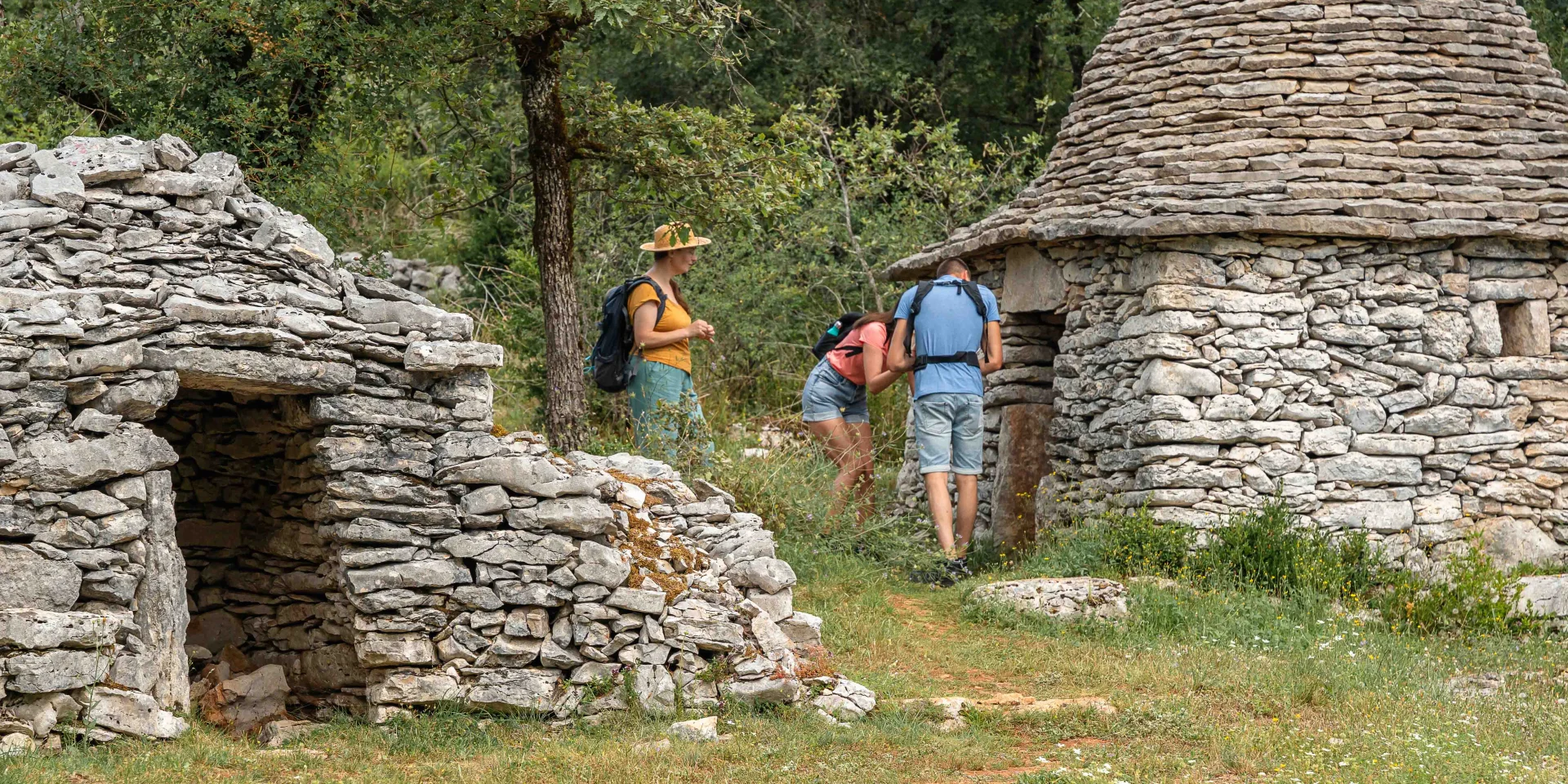 Family outing to Marcilhac-sur-Célé
Family outing to Marcilhac-sur-Célé Family outing to Marcilhac-sur-Célé
Family outing to Marcilhac-sur-CéléWe leave the coolness of the Célé valley, still imbued with morning humidity, to plunge into this unspoilt area. Marcilhac-sur-Célé and its picturesque lanes, dominated by the majestic ruins of the Benedictine abbey, gradually recede behind us. An unassuming path leads us to our first discovery: the Caselle du Lac, a solitary little hut emerging from the dry grass to form a picturesque backdrop. A little further on, a dolmen stands in a sheep pen, a fascinating vestige of the past. We then enter a light forest of oak and boxwood. On the stony path, the wild beauty of the area envelops us, leading us to the asphalt road at Les Combes Hautes. On the left, a curiosity catches our eye: the entrance to a chasm, l’Igue du Facteur, known to speleologists, where a wooden sign whispers underground secrets.
Impressive dry-stone walls line our path, guiding our steps amidst oak, box and Montpellier maple trees. Here and there, wild orchids brighten up the landscape with colorful touches. On either side of the path, caselles and grangettes emerge, bearing witness to a rich agricultural past. Halfway along the trail, after passing through a beautiful stone gate with an ocellated lizard gilded on it , we discover a small group of caselles, the remains of former cultivated plots. These stone huts, once used as shelters for shepherds, animals and batteries, tell the story of farms in bygone days. Each structure seems to whisper the memories of past generations, paying homage to ancestral know-how and the harmonious relationship between man and the land.
The path rises gently towards the road to be crossed. On the other side, the GR®651awaits us . Our eyes meet those of pilgrims on their way to Santiago de Compostela. On the hillside, we discover the highlight of the show: an exceptional view of Marcilhac-sur-Célé and its majestic cliffs. These sunny causse ledges encourage the growth of Mediterranean plants such as jasmine and pistachio terebinth. The sheer cliffs also provide refuge for rock birds such as therock swallow and the peregrine falcon. At the end of the walk, a double caselle reminds us of the site’s history. An incredible experience!
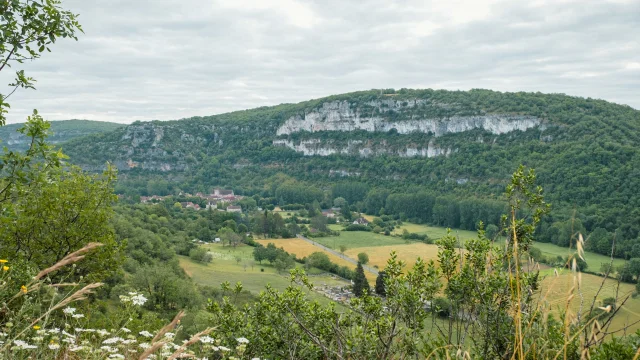 Photo spotting in the Célé valley
Photo spotting in the Célé valley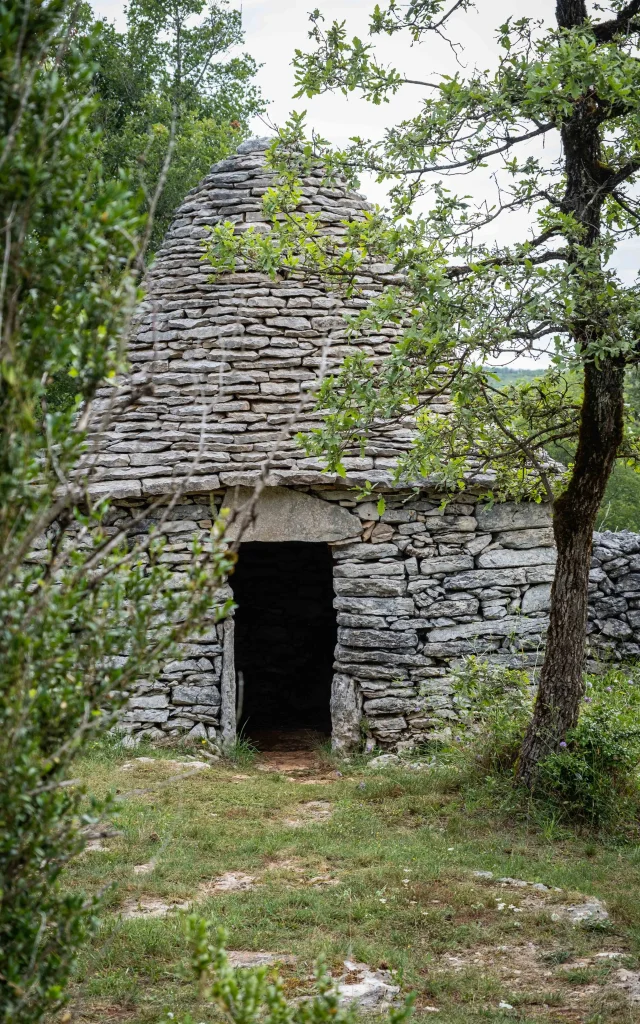 Photo spotting in the Célé valley
Photo spotting in the Célé valley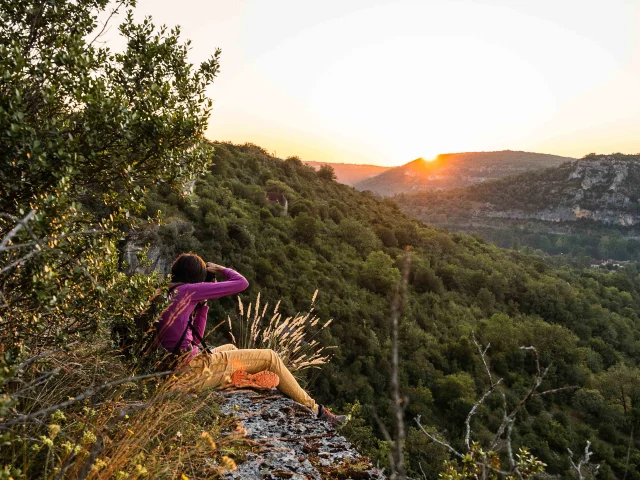 The Célé valley in the rising sun
The Célé valley in the rising sun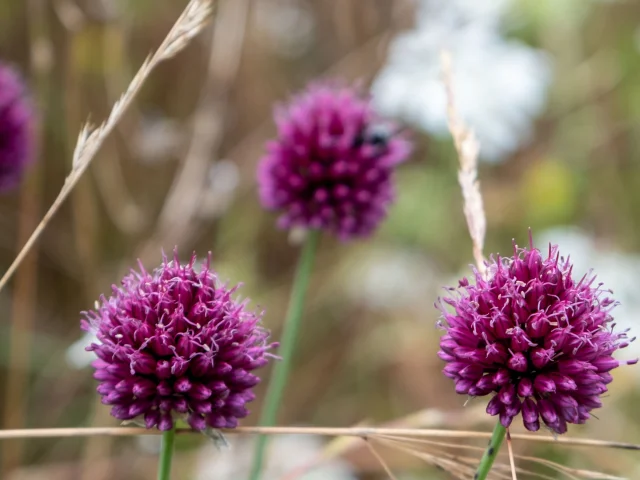 Photo spotting in the Célé valley
Photo spotting in the Célé valleyThe route crosses an Espace Naturel Sensible (ENS) in the Lot, a protected area. These areas are distinguished by their unique landscapes, rich biodiversity and fragile ecosystems. They also offer great ecological variety, enriched by a restored built heritage. Please contribute to the preservation of these natural environments by staying on the paths and leaving no trace of your passage.